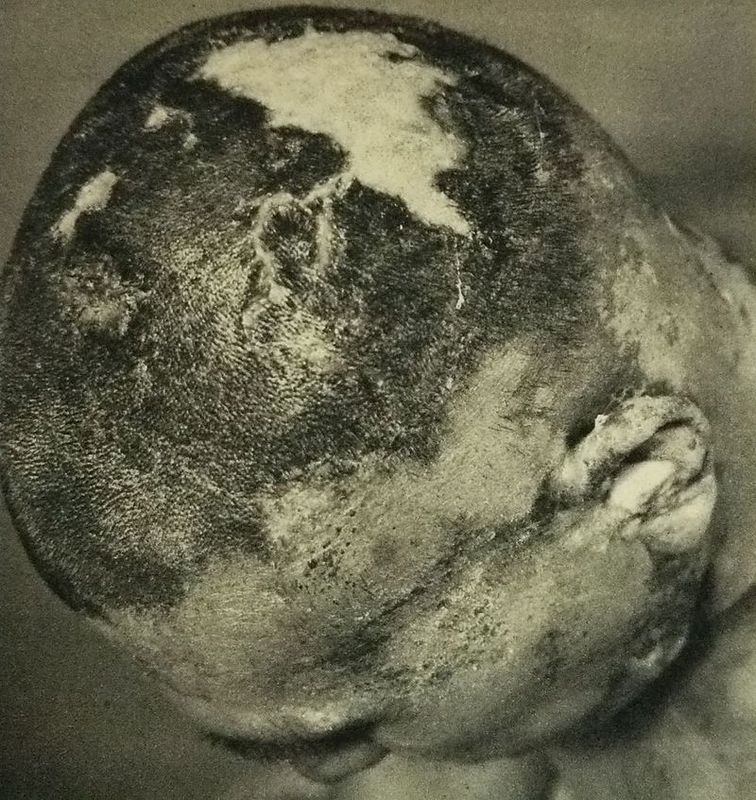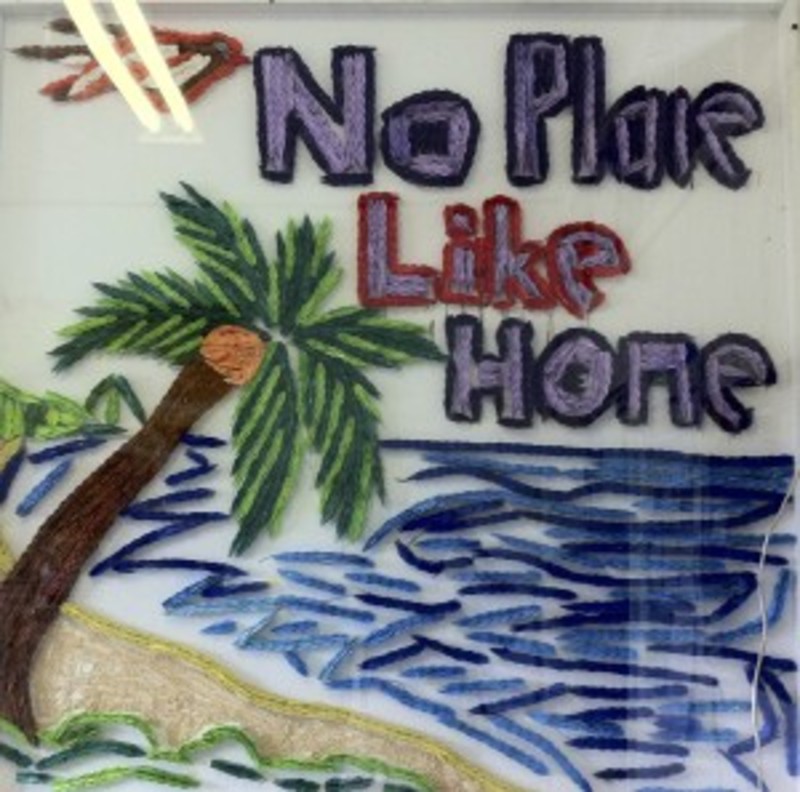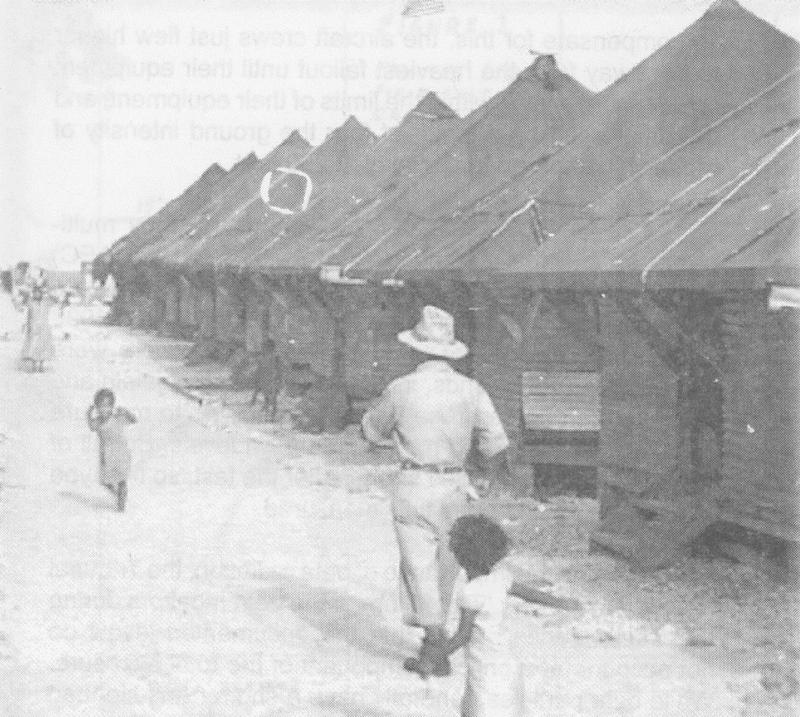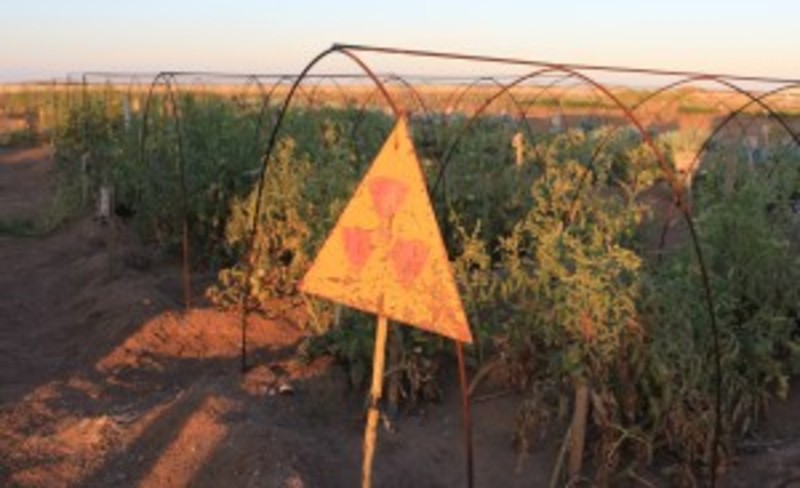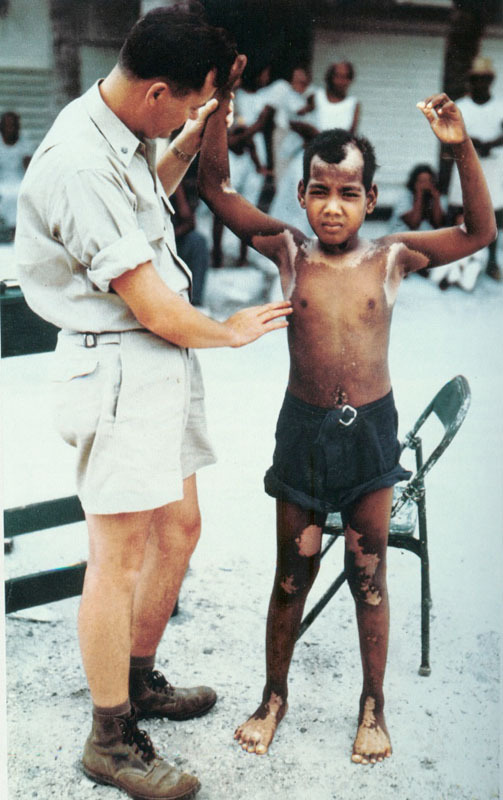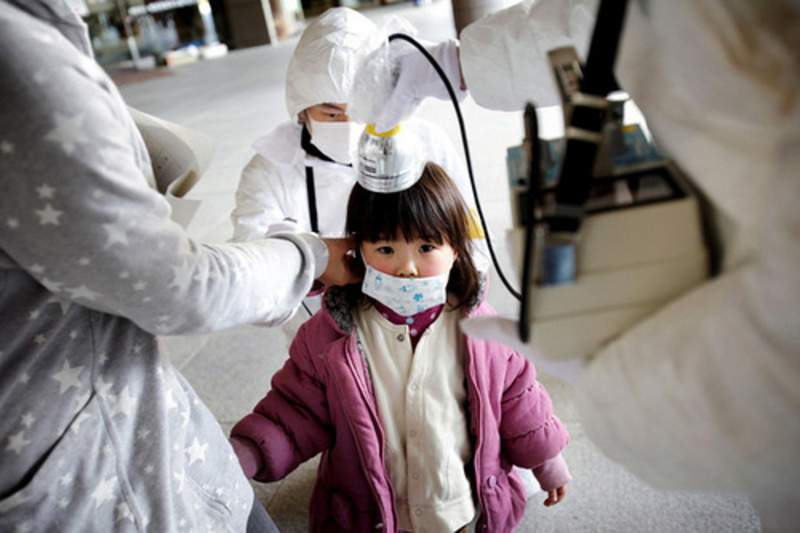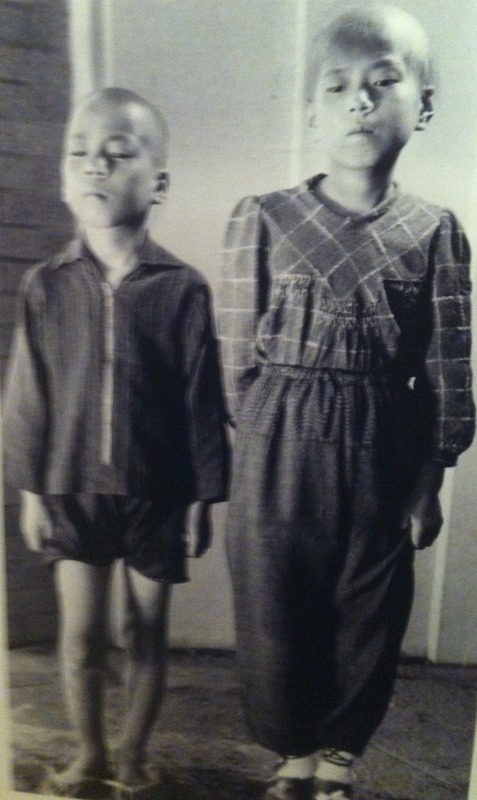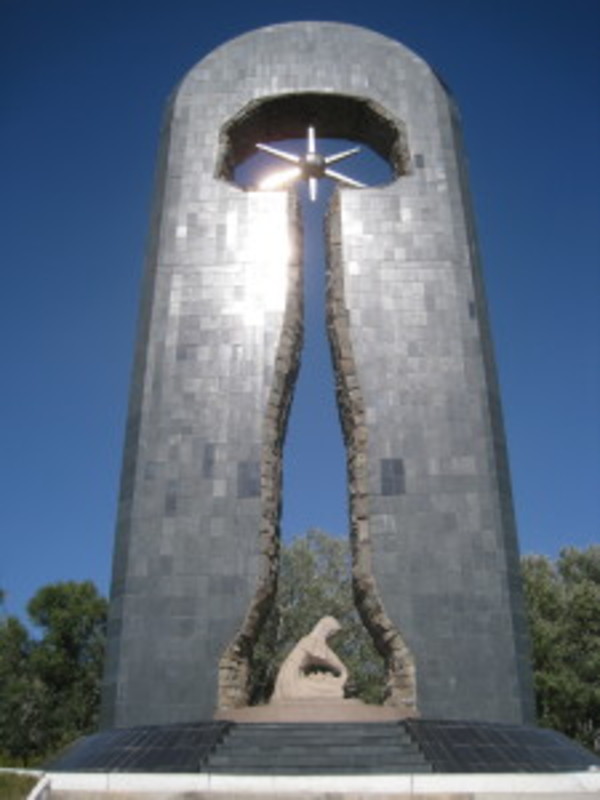The Radiation That Makes People Invisible: A Global Hibakusha Perspective

Radiation makes people invisible. We know that exposure to radiation can be deleterious to one’s health; can cause sickness and even death when received in high doses. But it does more. People who have been exposed to radiation, or even those who suspect that they have been exposed to radiation, including those who never experience radiation-related illnesses, may find that their lives are forever changed – that they have assumed a kind of second class citizenship. They may find that their relationships to their families, to their communities, to their hometowns, to their traditional diets and even traditional knowledge systems have been broken. They often spend the remainder of their lives wishing that they could go back, that things would become normal. They slowly realize that they have become expendable and that their government and even their society is no longer invested in their wellbeing.
As a historian of the social and cultural aspects of nuclear technologies, I have spent years working in radiation-affected communities around the world. Many of these people have experienced exposure to radiation from nuclear weapons testing, from nuclear weapons production, from nuclear power plant accidents, from nuclear power production or storage, or, like the people in the community where I live, Hiroshima, from being subjected to direct nuclear attack. For the last five years I have been working with Dr. Mick Broderick of Murdoch University in Perth, Australia on the Global Hibakusha Project. We have been working with victims in radiation-affected communities all around the world. Our research has revealed a powerful continuity to the experience of radiation exposure across a broad range of cultures, geographies, and populations. About half way between beginning this study and today the triple disaster at the Fukushima Daiichi nuclear power plant occurred in Japan. One of the most distressing things (among so many) since this crisis began is to hear people, often people in positions of political power and influence, say that the future for those affected by the nuclear disaster is uncertain. I wish that it were so, but actually, deep historical precedents suggest that the future for the people who lived near the Fukushima Daiichi meltdowns is predictable.
A child from Rongelap showing health effects from radiation exposure after Bravo
Radiation burns on the scalp of a Daigo Fukuryu Maru crewmember
Here I will outline some continuities in the experiences of radiation-affected people. Most of the following also holds true for people who merely suspect that they have been exposed to radiation, even if they never suffer any health effects. Many have already become a part of the experiences of those affected by the Fukushima disaster. There are, of course, many differences and specificities to each community, but there is also profound continuity.
Sickness and mortality– Sickness and even death are the results of exposure to high levels of radiation that people have come to expect. It is important to recognize that there are many different ways that people can become ill after exposure to radiation. Those exposed to high levels of gamma radiation can suffer from acute radiation sickness and death can come in a matter of days, weeks or months. Tens of thousands of people died of acute radiation sickness in Hiroshima and Nagasaki after surviving the nuclear attacks. Kuboyama Aikichi, the radioman of the Japanese tuna fishing boat the Daigo Fukuryuu Maru, died six and a half months after his exposure to high levels of gamma radiation from the Bravo nuclear weapon test conducted over 100 km from where the boat was anchored in the Marshall Islands (all other crew members suffered radiation sickness). A nuclear weapon gives off a very large burst of gamma radiation that lasts a very short time, but if the body is exposed to high levels, it can cause illness and death relatively quickly. High levels of radioactive fallout from a nuclear detonation can also create significant gamma exposures at distances far from the explosion, as was the case for the crew of the Daigo Fukuryu Maru.
For those who were not close to the detonation of a nuclear weapon, or within a short distance of a disaster like the Chernobyl or Fukushima disasters, illness is often the result of internalized alpha-emitting particles. With nuclear detonations this comes down with the fallout. In the case of Chernobyl and Fukushima,the two greatest civilian nuclear power plant accidents to date, these came down over large areas as the plumes of the explosions settled back to Earth (in Fukushima the plumes came down over 100 km from the plant, while in the case of Chernobyl the plumes came down primarily across the border to the north in Belarus, but also contaminated areas as far away as the UK and Sweden). Alpha emitting particles cannot penetrate the skin as gamma radiation can, but they are internalized through inhalation or swallowing or through cuts in the skin (a basic primer on the differences between alpha, beta and gamma radiation can be found here).
These particles don’t give off a large amount of radiation, but if they lodge in the body they continue to expose a small number of cells to radiation 24 hours a day, often for the rest of a person’s life. This can result in cancers and immune disorders that develop later, sometimes after a few years, sometimes after one or more decades. Since the plumes of the three explosions at Fukushima deposited large amounts of alpha emitters across a large area, this poses a significant danger to those living in the contaminated areas, especially to children who are affected more significantly by radiation exposures than adults since their bodies are growing rapidly.
It is disingenuous for nuclear industry apologists to say things like “no one died at Fukushima” since they are well aware that for most of the people who will eventually get sick this process will take time. We are currently in the latency period for these illnesses, a point well understood, but suppressed by nuclear industry and government spokespersons. Recent studies have also shown that more people have died from stress, lack of appropriate health care and suicide in Fukushima Prefecture since the 311 disaster than died in the prefecture from the tsunami.1
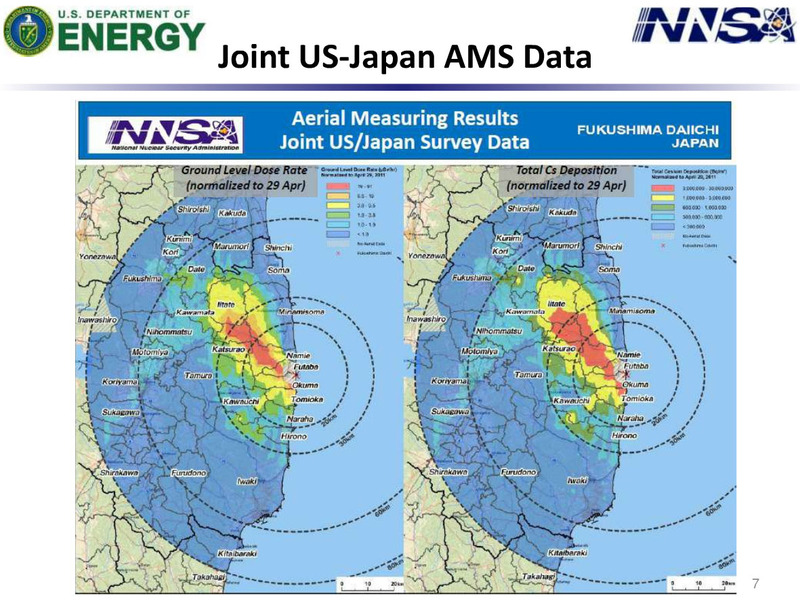
A mural made of peace cranes in Bikini Atoll City Hall (photo by author)Losses of homes, community and identity–Areas that experience radioactive contamination often have to be abandoned by those who live there. The levels of radiation may be so high that continued habitation could be dangerous to health. In these cases people lose their homes, often permanently.
For communities that have to be abandoned, the bonds that have been built up and that sustain the wellbeing of the community disintegrate. Friends are separated, extended families are often separated, and schools are closed. People who have lived in the same place all of their lives have to make a fresh start, sometimes in old age, sometimes as children. The communal structures that sustained them are destroyed: shopkeepers who know them, neighbors who can be relied on, the simple familiarity of communities. What is lost when a person is no longer able to eat an apple from a tree planted by a parent or grandparent? Tony Hood, a former uranium miner from Gallup, New Mexico, spoke of the sense of loss when contemplating the necessity for his Navajo community to abandon their homes because of uranium contamination, “Our umbilical cords are buried here, our children’s umbilical cords are buried here. It’s like a homing device.”
With the loss of community, many people lose their livelihood. This is especially true in places where many have been farmers, fishers or herders for generations. When someone who has only known farming is taken from the land they have tended, when fishers can no longer fish in areas where they understand the natural rhythms and habits of the fish, it can be impossible to start over. Often such people are forced to enter service positions or become dependent on state subsidies, further eroding their sense of self and wellbeing. Usually, those removed from their land because of contamination are placed into temporary housing. In Fukushima this has been the case for 100,000 who remain in temporary housing while hundreds of thousands of others who are not housed by the government have fled the area. In almost all cases the public housing provided to officially recognized victims proves not to be temporary, but becomes permanent.
“Temporary housing” for those evacuated from Bikini Atoll (above) and Fukushima (below) Agricultural test plot on contaminated land near the Polygon (test site) in Kazakhstan (photo by author)
Frequently, multigenerational families that have been living together for decades, find it impossible to remain together. This can remove care for the elderly, childcare for young families and further erodes the continuity of family identity, knowledge and support. Removal from land also is accompanied by the loss of a traditional diet. Those without access to the land and seas that have provided food for their families often begin a journey of dislocation and ill health. In some communities such as the small villages around the former Soviet nuclear test site in Kazakhstan, many people simply continue to live in dangerously contaminated homes. The state responsible for their exposures (the Soviet Union) no longer exists and neither the Russian nor Kazakh governments feel the responsibility to evacuate them or to provide health care for those with disabilities. Many live very traditional lives deriving most of their food from their own gardens and from livestock raised on their contaminated land. Many long-lived radionuclides simply cycle through this ecosystem and residents can be contaminated and recontaminated over generations.4
In Fukushima Prefecture the Japanese government proclaimed a 20km mandatory evacuation zone, while also designating a “suggested” evacuation zone from 20km to 30km. These zones do not directly reflect the dangers from radiation levels. In some of the mandatory evacuation areas the gamma levels are below those in parts of the suggested evacuation areas. Some areas where the plumes came down 50-80km away have even higher levels. The limits to mandatory evacuation areas reflect efforts to limit the direct liability of the government. Even today children live in areas where the radiation levels are too high for them to be allowed to play or spend significant time outdoors.
Fukushima school children play in an indoor sandbox (photo: Toru Hanai)
Loss of traditional knowledge– In some remote places survival is dependent on centuries old understandings of the land. In Maralinga, Australia the areas where the British conducted nuclear tests between 1956 and 1963 are very difficult places to live. Traditional communities in these areas often have songs that hold and transmit essential knowledge about how to survive in such a harsh environment, such as where to find water, when to hunt specific animals, when to move to various locations. But can knowledge gathered over millennia be effectively applied to radiation disasters?
When the British relocated entire communities to areas hundreds of kilometers from their homes, the local knowledge chain was broken. It became impossible for the refugees to sustain a traditional life in areas where they had no knowledge of the rhythms of the land and animals. This removal from their lands led to ever increasing dependence on governmental assistance and severed what had been millennia of self-reliance. While self-reliance had been dramatically impacted by the brutal rule of the Australian government and its policies towards aboriginal peoples, the people living near the test site were still living on the land in the 1950s. Relocation led to the further erosion of community, familial and personal wellbeing.
Discrimination– People who may have been exposed to radiation often experience discrimination in their new homes and may become social pariahs. We first saw this dynamic with the hibakusha in Hiroshima and Nagasaki who found it very difficult to find marriage partners, since prospective spouses feared they would have malformed children, and found it difficult to find jobs since employers assumed that they would be chronically sick. Hibakusha children, moreover, often become the targets of bullying. It became very common to attempt to hide the fact that one’s family had been among those exposed to radiation.6
Many people are familiar with the story of Sadako who died at the age of twelve after being exposed to radiation from the nuclear attack on Hiroshima ten years earlier. Sasaki Sadako folded paper cranes in accordance with a Japanese tradition that someone who folds 1,000 paper cranes is granted a wish. Sadako’s story has become well known and children around the world fold paper cranes when they learn her story, many of which are sent to Hiroshima. While Sadako has become a symbol of the innocence of so many hibakusha, her father tried to hide this fact so that his family would not suffer discrimination and was upset that his daughter had become so famously afflicted.
Children whose families evacuated from Fukushima prefecture after the triple meltdowns at Tepco’s nuclear power plant frequently became victims of bullying at their new schools. Cars with Fukushima license plates were scratched when parked in other prefectures. Often this is the result of the natural fear of contamination that is associated with people exposed to a poison. In the Marshall Islands those who were evacuated from Rongelap and other atolls that became unlivable after being blanketed with radioactive fallout from the US Bravo test in 1954 have had to live as refugees on other atolls for several generations now, with no prospect of return home. The Marshall Islands have a very small amount of livable land and so being moved to atolls that traditionally belonged to others left them with no access to good soil and good locations for fishing and storing boats. They have had to live by the good graces of their new hosts, and endure being seen as interlopers.
Becoming medical subjects– Many people who have been exposed to radiation then become the subjects of medical studies, often with no information about the medical tests to which they are subjected, and frequently without provision of treatment by those conducting the tests. Hibakusha of the nuclear attacks on Hiroshima and Nagasaki became medical subjects of the Atomic Bomb Casualty Commission during the American occupation of Japan after World War Two. This study has continued to this day under the now jointly administered US-Japan Radiation Effects Research Foundation. In the early days of the study Japanese hibakusha had no choice about being subjected to the medical exams. An American military jeep would appear in front of their homes and they had to go in for an examination, whether it was a good time or not. Not only did they receive no information about the results of their tests but the US government provided no treatment. This has happened in many radiation-affected communities.
Young hibakusha in Hiroshima suffering from radiation sickness photographed at the ABCC
In 1966 a US nuclear bomber blew up in midair and the debris fell on the small village of Palomares, Spain. Four H-bombs fell from the plane, one into the sea, and three onto the small village. None exploded but two broke open and contaminated part of the town with plutonium and other radionuclides. To this day some of the residents of Palomares are taken to Madrid each year for a medical examination as the effects of exposure on their health is tracked. They have never been given any of the results of the tests nor informed if any illnesses they develop were related to their exposures. They are subjects, not participants in the gathering and assessing of the effects of radiation on their bodies. There is no doubt that such studies contribute data to scientific understanding of the health consequences of radiation exposures (the data itself is contentious for reasons cited below)8, however for those from whom the information is gathered, being studied but not informed reduces one’s sense of integrity and agency in one’s health maintenance. Many Pacific islanders exposed to radiation by the nuclear tests of the US, the UK and France had such experiences where they were examined and then sent off with no access to the results and no medical follow-up. Many report feeling as if the data had been harvested from them and at their expense.
Anxiety– Often those exposed to radiation are told that they have nothing to worry about. Their anxieties are belittled. Radiation is a very abstract and difficult thing to understand. It is imperceptible – tasteless, odorless, invisible – adding to uncertainty that people feel about whether they were exposed, how much they were exposed to, and whether they and their loved ones will suffer any health effects. The dismissal of their anxieties by medical and governmental authorities only compounds their anxiety. When other members of their community develop health problems, such as thyroid cancer and other illnesses years later it can cast a pall over their own sense of wellbeing for the rest of their lives.
Every time that they run a fever, every time that they experience stomach pains, nosebleeds, and other common ailments, this anxiety rears up and they think – this is it, it’s finally got me. These fears extend to their parents, their children and other loved ones. Every fever that a child runs triggers fears that one’s child will die. Sadako was healthy for nine years following her exposure to radiation when she was two years old in Hiroshima, then one day her neck suddenly began to swell and she was soon diagnosed with leukemia. This is the nightmare world that the parents of children exposed to radiation, or who even simply suspect radiation exposure, experience on a daily basis. Every ailment can rip them apart.
Radiophobia and blaming the victim– Since it is often the case that who is and isn’t exposed to dangerous levels of radiation, especially to internalized alpha emitting particles, is unknown, large numbers of people near a radiological incident of some kind worry about their health and the health of loved ones. Among this group, some have been exposed and some have not. The uncertainty is part of the trauma. Often, as is currently the case for the people of FukushimaNorthern Japan, all of these people are dismissed as having undue fear of radiation, and are often told that their health problems are simply the result of their own anxieties. In some cases that may be true, but it is beside the point.
For those who have experienced a nuclear catastrophe, who may have been removed from their homes and communities and lost those bonds and support systems, who are uncertain as to whether each flu or stomach ache is the harbinger of the end, and who cannot be certain that contamination from hard to find alpha emitting particles is still possible when their children play in the park, anxiety is the natural response. Regardless of whether it causes acute health problems, forces outside of their control have upended their lives. They now must live a life of uncertainty and often experience discrimination. Of course they are going to suffer from the anxiety that this situation produces. To blame them for this is to blame the victims and is a further form of traumatization.9
The lives of those exposed to radiation, or those in areas affected by radiation but uncertain about their exposure, will never be the same. As Natalia Manzurova, one of the “liquidators” at Chernobyl said in an interview published two months after the Fukushima triple meltdowns: “Their lives will be divided into two parts: before and after Fukushima. They’ll worry about their health and their children’s health. The government will probably say there was not that much radiation and that it didn’t harm them. And the government will probably not compensate them for all that they’ve lost. What they lost can’t be calculated.”10
(This article is expanded from an article originally published on the SimplyInfo website. Original can be seen here)
Robert Jacobs is an associate professor at the Hiroshima Peace Institute of Hiroshima City University in Japan and an Asia-Pacific Journal Associate. He is the author of The Dragon’s Tail: Americans Face the Atomic Age (2010), the editor of Filling the Hole in the Nuclear Future: Art and Popular Culture Respond to the Bomb (2010), and co-editor of Images of Rupture in Civilization Between East and West: The Iconography of Auschwitz and Hiroshima in Eastern European Arts and Media (2012). His book, The Dragon’s Tail, is available in a Japanese language edition by Gaifu. He is the principal investigator of the Global Hibakusha Project.
Notes
1 “Fukushima stress deaths top 311 toll,” Japan Times (February 20, 2014) (accessed July 31, 2014).
2 Dan Frosh, “Amid toxic waste, a Navajo village could lose its land,” New York Times (February 19, 2014) (accessed July 31, 2014).
3 “Fukushima 3 Years On,” SimplyInfo (March 11, 2014) (accessed July 31, 2014).
4 Gusev, et al., “The Semipalatinsk nuclear test site: A first analysis of solid cancer incidence (selected sites) due to test site radiation,” Radiation and Environmental Biophysics (1998) 37: 209-214.
5 Toru Hani and Elaine Lies, “The children of Japan’s Fukushima battle an invisible enemy,” Reuters (March 10, 2014) (accessed July 31, 2014).
6 Robert Jacobs, “Social fallout: Marginalization after the Fukushima nuclear meltdown,” The Asia-Pacific Journal, Issue 28, Number 4 (July 11, 2011) (accessed July 31, 2014).
7 Many doctors at the ABCC did provide “under the table” medical treatment, but it was the policy of the organization not to provide medical treatment.
8 There are many reasons why activists and scholars challenge the integrity of the data in many of these studies. For example, considering the Life Study at the RERF in Hiroshima and Nagasaki, many fault the fact that the study was begun after the deaths of most who passed away from the effects of acute radiation, so they are not included in the statistics, the study does not include the health effects of alpha emitting particles in its data, and it is dependent on a process of dose reconstruction that can be seen as aspirational rather than factual.
9 Robert Jacobs, “Fukushima Victimization 2.0,” Dianuke (March 11, 2012) (accessed July 31, 2014).
10 Dana Kennedy, “Chernobyl cleanup survivor’s message for Japan: “Run away as quickly as possible,” Desdemona Despair (March 23, 2011) (accessed July 31, 2014, originally published by AOL News).



